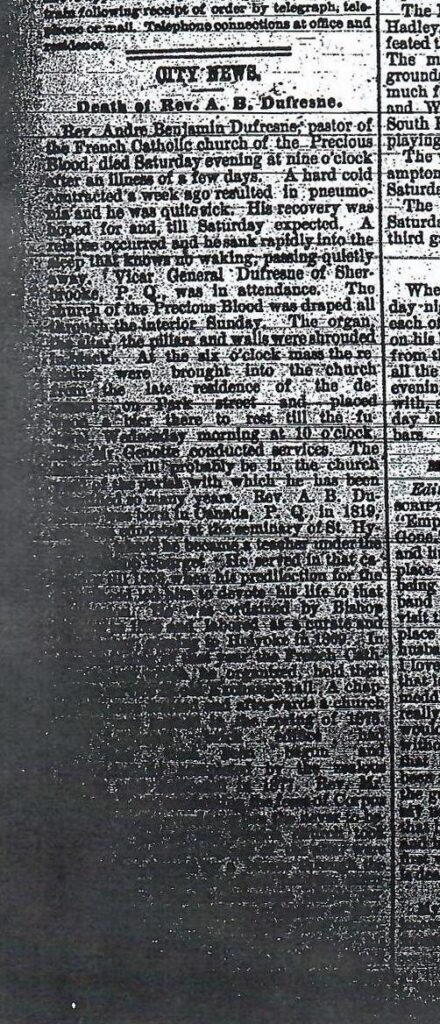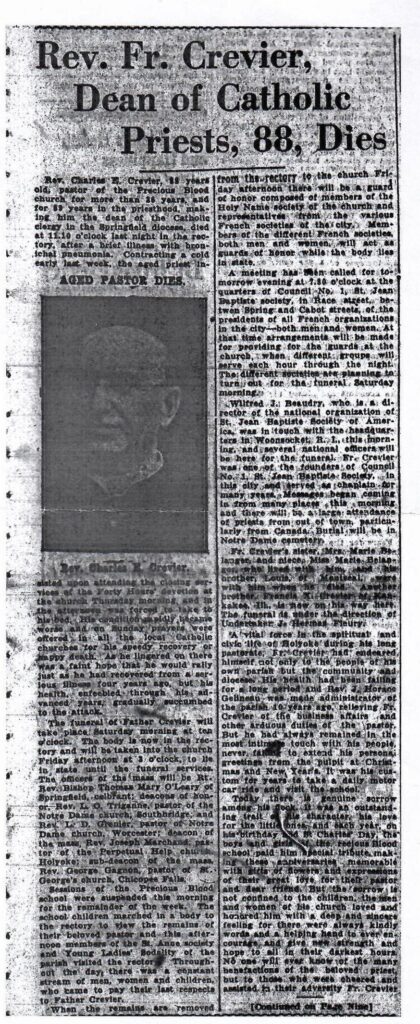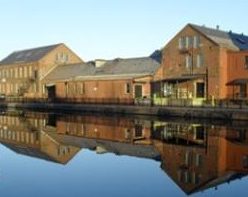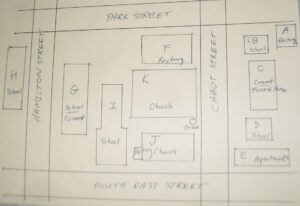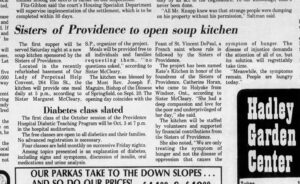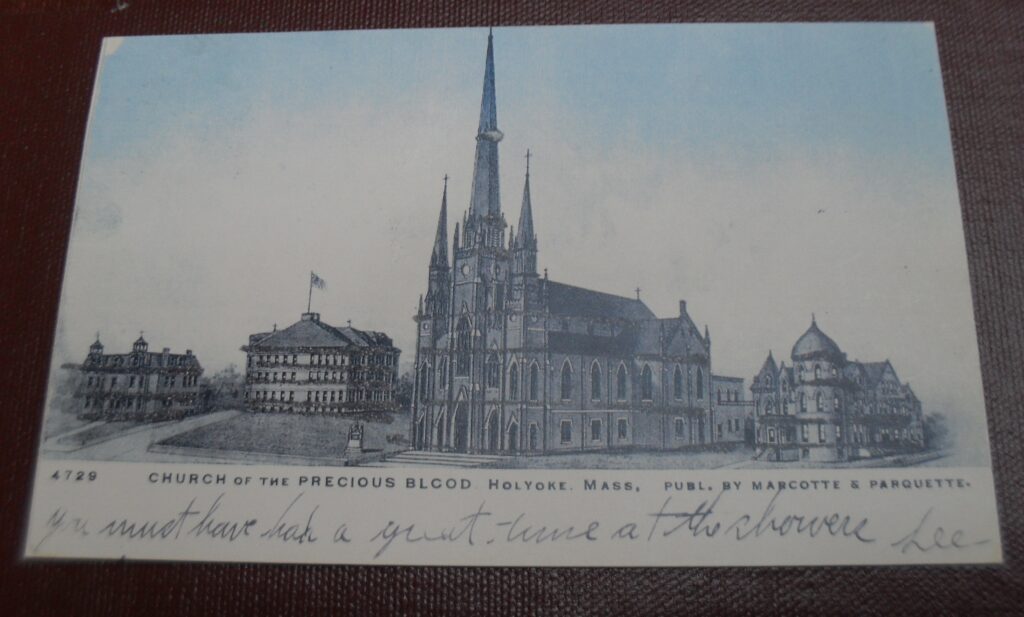
- Private GROUP TOUR (COSTS) is one hour long for this Precious Blood Church (Campus and Neighborhood) walking tour. It is fully outdoors. Also a one hour indoor presentation can be given.
- A free public tour comes up every five years.
- A self-tour is available for anyone using the maps and text seen below. – LOCATION
- Churches of Holyoke
(A) old Rectory - (B) School for Girls - (C) Convent - (D) School for Boys - (E) Apartment - (F) Rectory - (G) Park Street School - (H) Hamilton Street School - (I) Precious Blood School - (J) wooden Precious Blood Church - (K) brick Precious Blood Church
stops A – B – C- D – E – Precious Blood Old Convent, Rectory, and Schools
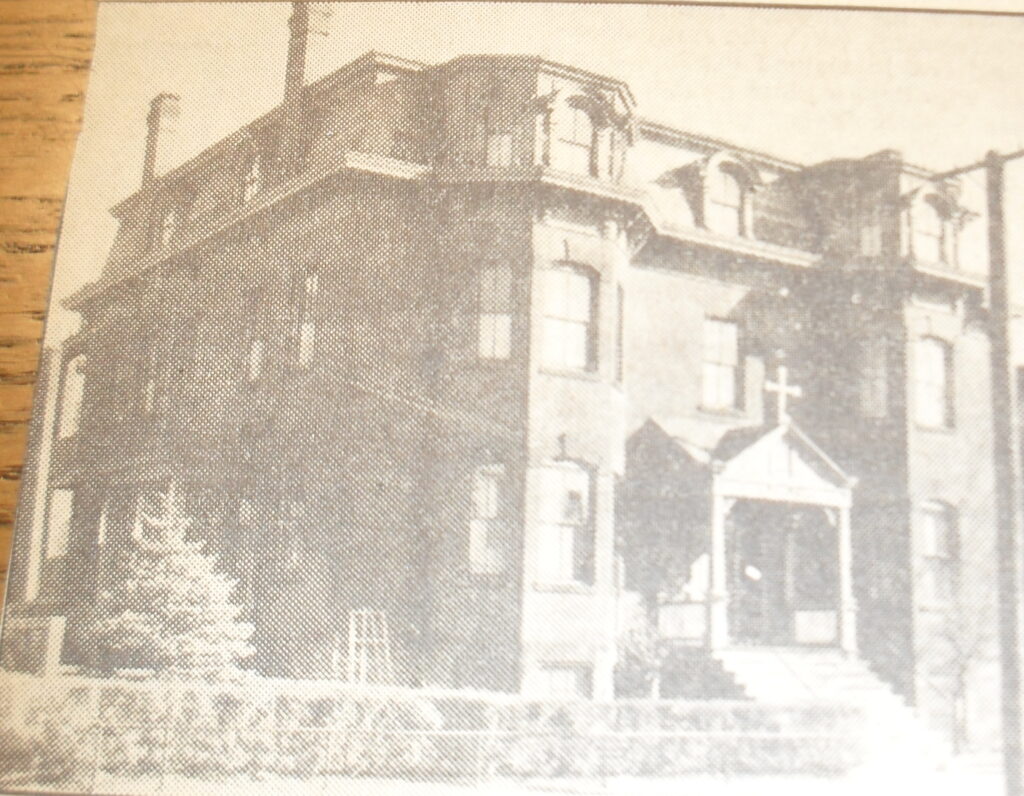
The pastor of Precious Blood had lived in the back of the wooden church in an attached annex (1870), then in the back of the basement of the brick church (1875), and then in a wooden home (A) along Park Street (November of 1878). This lot across the street from the church is called the Picard lot.
In 1876 the Precious Blood School starts in the basement of the brick church. The priests are the teachers and only boys attended. In September of 1883 a full school for boys (D) was built across the street and a full school for girls (B) too. These brick buildings flanked a convent (C) that was also built that year – Convent of Precious Blood. The girls’ school flanked it to the west and the boys’ to the east. By 1888 the Sisters of Saint Anne arrived from Lachine of Quebec province to teach both genders. In 1894 a boys’ school (I) was opened on South East Street and its original building was given to renters. The girls’ school would continue there until 1918 when they too would join the boys.
In 1929 the nuns would move into a new convent at the Park Street School (G) and the convent would become a funeral home in 1940 – Blais. Calixte Blais had started a funeral home in 1903 and moved into this former convent (57 Cabot Street) with his family (1940 to 1980). He seems to have moved to Holyoke in 1901 and have been a hostler for a year. In 1982 he starts Blais – Chicopee. By 1984 he is in Chicopee only. The original Blais Funeral Home is at 75 Cabot Street (1903-1904). Then at 546 South Bridge Street in the 1910s. In the 1920s and 1930s, he is at 522 South Bridge Street.
All these four former Precious Blood buildings were razed from the 1970s to the 1990s. The old girls’ school was razed in 1975. The very old boys’ school and the Blais home were razed in the 1990s. There was also an apartment complex in this block that might have been owned by the parish at some point. (E)
Sanborn map analysis:
stop F – Precious Blood Rectory
In 1891 Charles Crevier the pastor of the church had a modern rectory (F) built in a grand style. It was ready on August 17 1891. The architecture is Queen Ann Victorian with a Russian dome for flare. Father Crevier has hopes that he would be bishop some day so he wanted a grand home. His parents also had money and had a summer home in Granby. He inherited this home and land and in 1926 gave it to the Franciscan Friars.
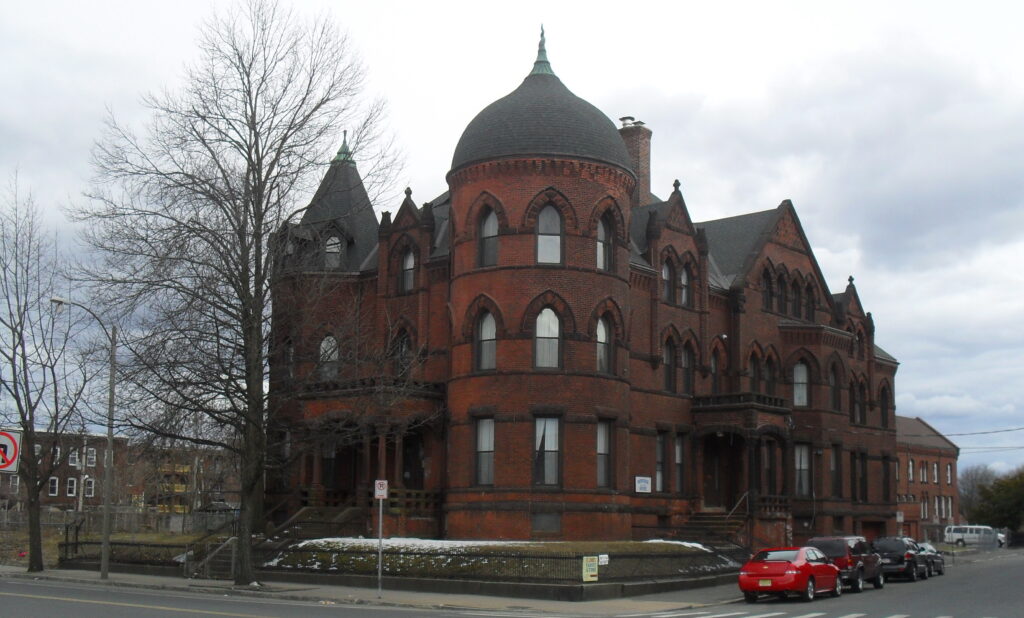
In 1979 the Precious Blood Church was sharing a priest with Sacred Heart Church and the rectory in that year opened a men’s charity home called Broderick House. Where once there were 12 bedrooms, there are now 52. Margaret’s Pantry and Saint Jude’s Clothing Home were placed into the back of the rectory in 1990.
stop G – Park Street School
In 1868 the Park Street School was started. Read about the schools of Holyoke. In 1891 and for five years Holyoke attempted its hand at teacher training. It was called the Normal Training School. The curriculum was two years of study and included subject and pedagogy. Only women entered the training program and only girls were in the classes. It happened in the Park Street School but was not a success. It had 4 primary grades for these novice teachers. By 1895 one in four teachers in the schools of Holyoke had been trained here. In 1929 Precious Blood buys the Park Street School. On May 1 1940 the Park Street School is converted into a convent and a chapel. It would not be until 1956 until the convent is finally renovated. In 1976 the charity Casa Maria is started here by the Sisters of Providence. On 27 Sep 1980 Kate’s Kitchen is opened in the basement of Perpetual Help Convent. They would later move to Precious Blood’s Convent.
In 2001 the Loreto House is started in the upper floors. They had been at the Perpetual Help location since 1987 but the fire there forced a move.
Mother Superiors at Precious Blood:
Sr. Marie Colombe
Sr. Marie de la Croix (1917-)
stop H – Hamilton Street School
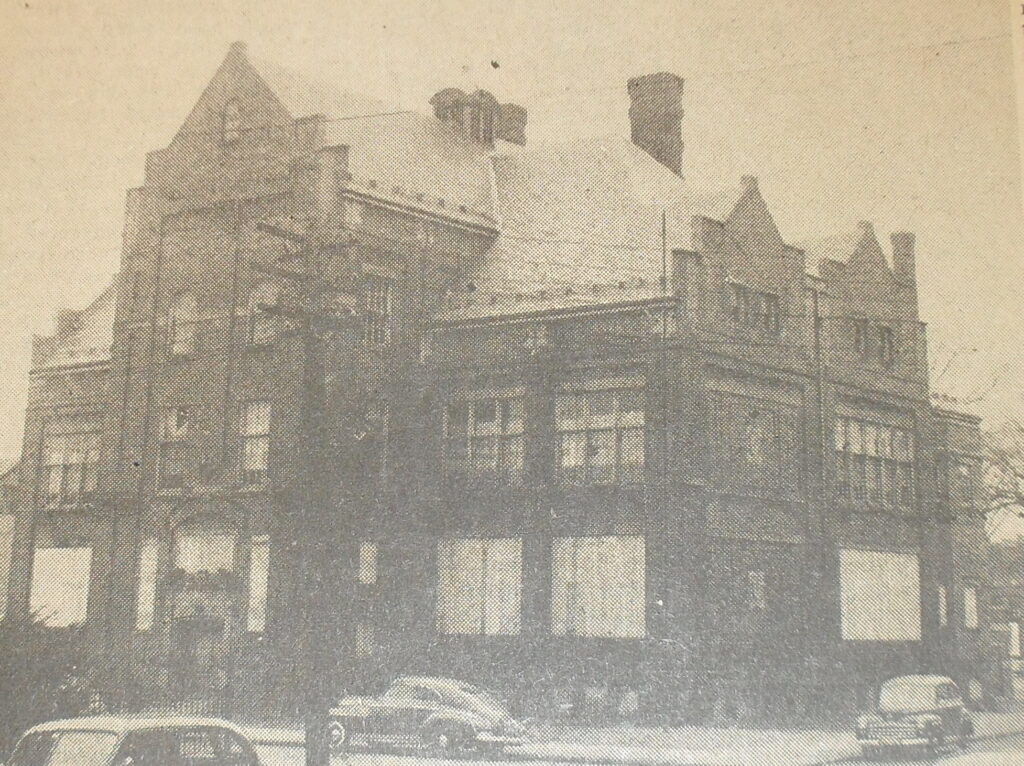
Across the street was the Hamilton Street School (H). This school was built in 1887 as an elementary school. Read about the schools of Holyoke. Holyoke vacated the building in 1948 and sold it to the Catholic school in June of 1953. Precious Blood High School (PBHS) moved to this Hamilton Street location in September of that year. In June of 1971 PBHS closed for good and would join Holyoke Catholic High School. In 1980 the school was razed.
stop I – Precious Blood School for Boys
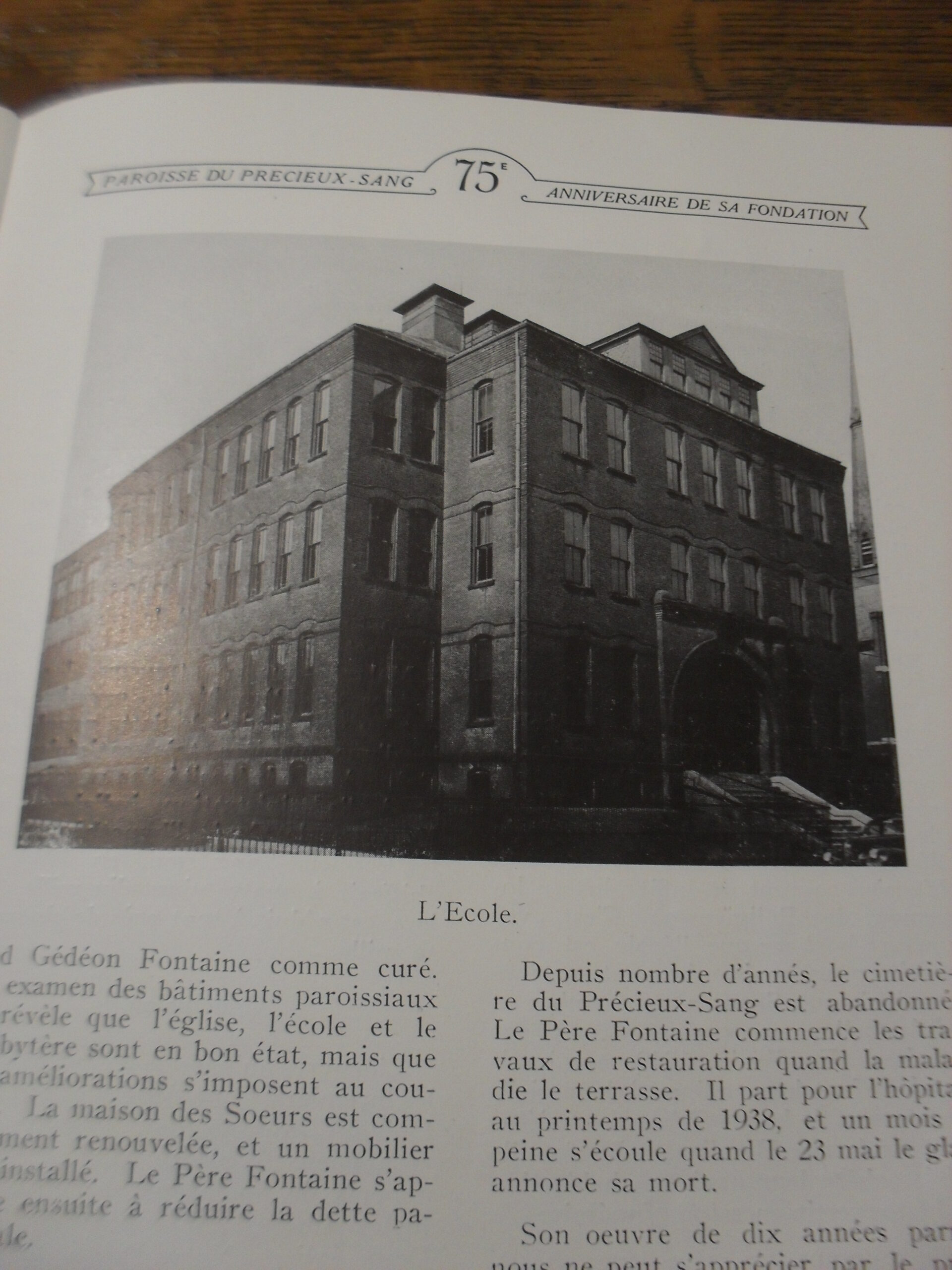
On September 18 of 1894 the Precious Blood School was opened on South East Street for boys only. The girls could fit very well in the older schools. The new school had 12 classrooms. Its first graduate was two years later – that is, June of 1896. In 1923 a six classroom annex was opened. In 1924 PBHS opens and would have its first graduate in 1928. All the Precious Blood Schools would remodel in 1954. Precious Blood Elementary would close for good in September of 1968 and be razed in 1980. The Precious Blood Parish was a complete campus for its Quebec immigrants. It added to its neighborhood through many years and still does give hope to the area in its charity work.
FUN FACTS:
- The Perpetual Help School start up did not decrease the number of students at Precious Blood.
- The Immaculate Conception School start up did decrease the number of students at Precious Blood.
- Maximum was in 1909 at 2,200 students in all three schools – Perpetual Help – Immaculate Conception – Precious Blood.
stop J – Precious Blood Church (wooden)
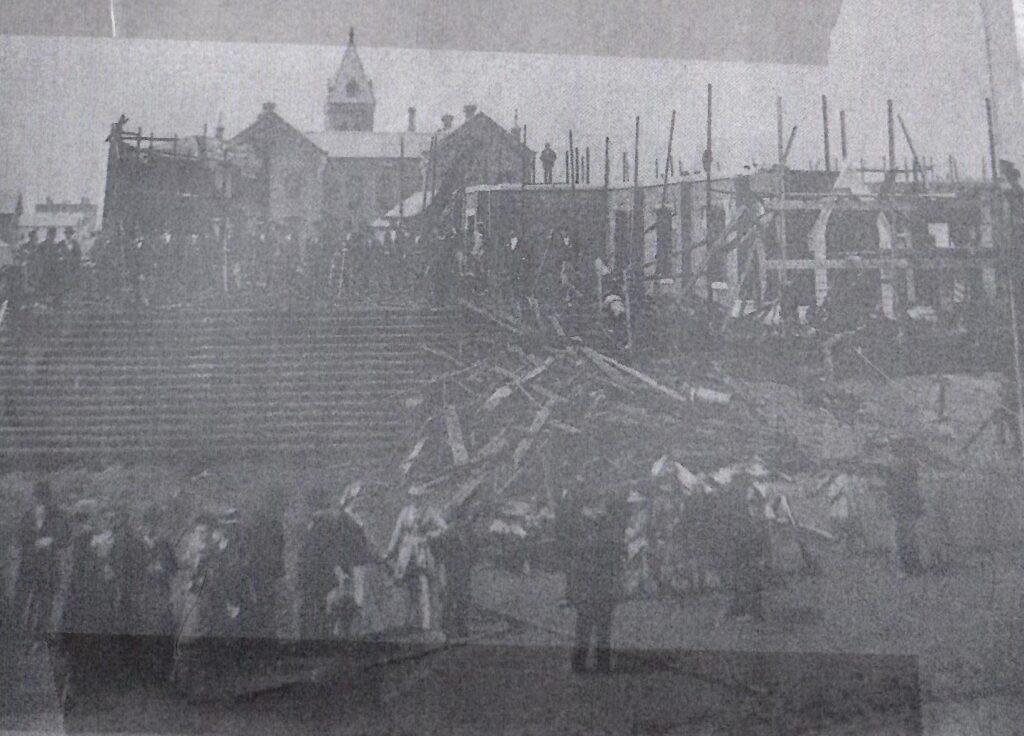
The story of the Precious Blood Church in Holyoke is one of tragedy and hope. Immigrants from Quebec were coming into Holyoke by the droves by the late 1860s. In 1868 the Precious Blood parish was born. For a few months they used the hall of the French Canadian Society. They used Exchange Hall on High Street for its first masses with the rectory down the street in Wright’s Hall at the corner of High and Lyman Streets. Before that they had attended Saint Jerome’ Church. The first priest was Andre Dufresne. He determined that his parishioners needed a church of their own and had work started on a temporary wooden church (J) on lower Cabot Street. This wood church had two floors with the upper floor being a loft. It was first used on Christmas Day 1869. Tragedy hit on May 27 1875 when a fire started in the front of the church. Due to the rush on the people to the doors and chaos of the people jumping from the second floor – there was a great loss of lives. 70 people died in that tragedy making it the 6th deadliest tragedy in the history of New England. 52 of the dead were female with many of them being older teens and young women. This was due to the eastern loft being used by single females had a greater distance to travel to get to the stairs at the west side of the church. Also, there were more females in Holyoke than males since there were more young women immigrating to Holyoke due to more fabric mills hiring them. In 1873 the Precious Blood Cemetery had been purchased in South Hadley. 48 of the dead were buried there in separate coffins but in a common grave. In 2003 a memorial was finally erected there to honor all that died that day. Their pastor who had once been buried alongside the church (in 1886) had been moved to a small mound above them. This is because the church was taken down in 1989 and the priest needed to be moved.
I have a research project that is attempting to determine all the victims by their birth records. See the LINK here.
The fire was quick and severe. There are multiple reasons for this. Curtains covered all the surface of the walls. This is since the walls had not been painted inside. The walls outside were also not painted. Pine wood dries out quickly if not painted nor treated. The fabric also did not have treatment. The church was insured for $6800 and the loss was $7000.
stop K – Precious Blood Church (brick)
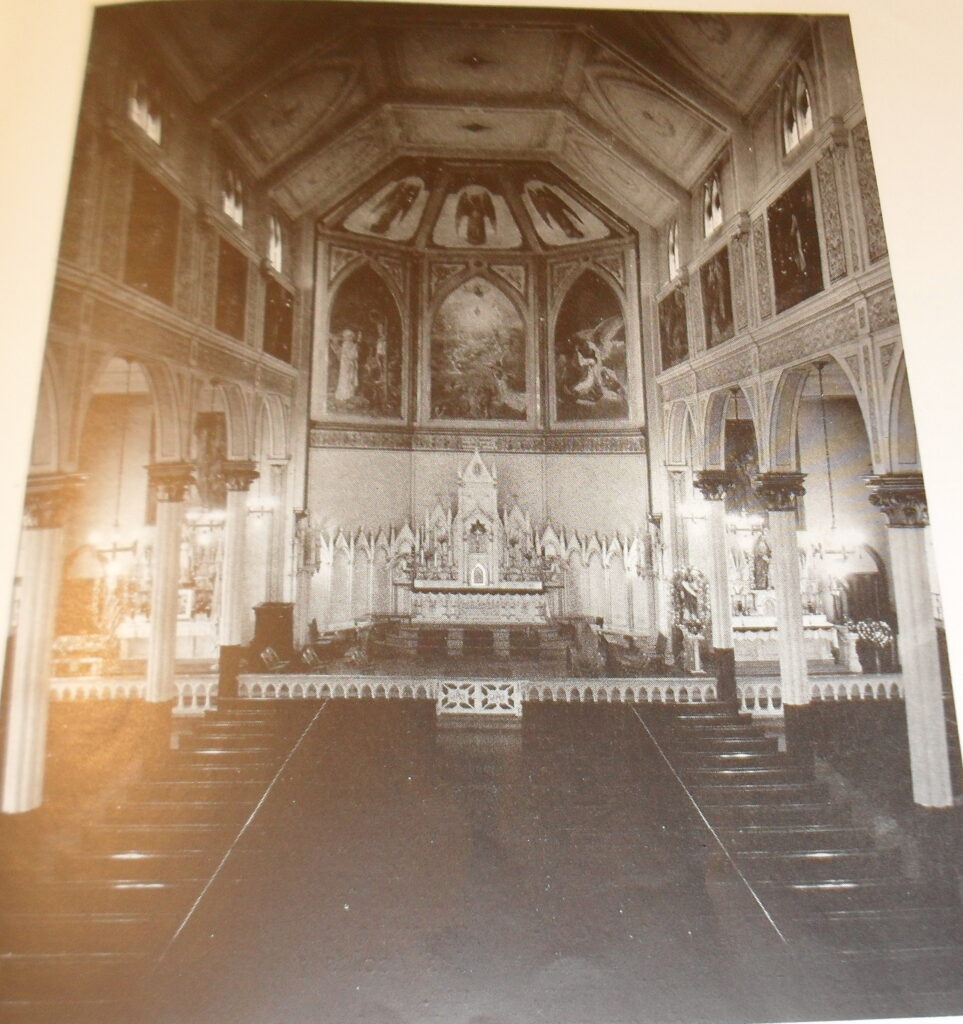
The masses were from that point forward held in the basement of the still not complete brick church. In 1878 it finally opened as a completed church and dedicated in that year (K). The basement was used as a multipurpose structure – Sunday school, church for masses, rectory, and hall. Sunday classes had started in 1876 and were taught by the pastor and his assistant at first. In 1878 the Grey Nuns arrived from Quebec. They had religious vows that allowed them only to teach girls so the boys were instructed by the pastors still. Mass was celebrated with much music and most of this music was Gregorian chants. This would be the only Catholic church in Holyoke for the Quebec ethnic group until May of 1890 when Perpetual Help started.
The basement of the church had been renovated in 1956 to be Precious Blood Memorial Hall. The Saint Jean Baptiste Society meets here. The hall was dedicated to the fire victims. The church was taken down on December 1 of 1989.
The Saint Jean Baptiste Society of Holyoke was organized in 1868. They at first met in the St John’s Hall in the top floor of the Martin Block on High Street.
stop L – Precious Blood Cemetery
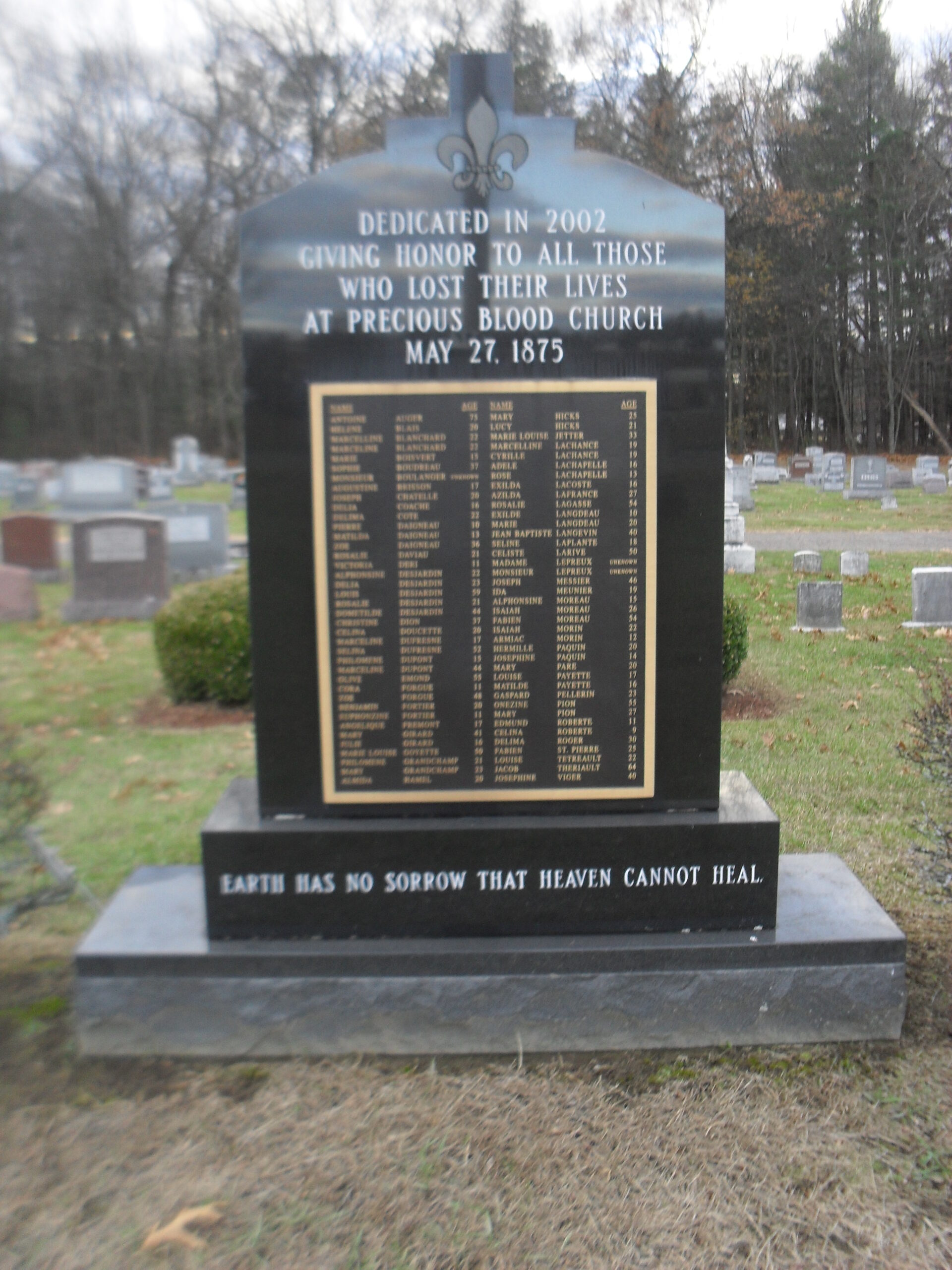
This stop means an extra trip to South Hadley. The Precious Blood Cemetery is near the intersection of routes 202 and 33. The link in the previous sentence will bring you to a page that will guide you through the tour.
The cemetery seems to have been started in 1873.
stop M – South Holyoke Neighborhood
South Holyoke was settled by many ethnic groups – Quebec, German, Jewish, and Greek. All had churches in the area.
The Alsace-Lorraine Hall, the Alsace-Lorraine Society Building, and the Alsace-Lorraine union of America all meet at the building at 249 Park Street. This building was founded on September 14 1891.
The Valley Arena was a very important gathering place. It burnt once on June 13 1943.
L’Union National Francaise of Holyoke was founded August 28 1894.
| pastor | name | start | end | burial |
| 1st | Andre Dufresne | 1869 | 1887 | Precious Blood Churchyard |
| 2nd | Hermas Landry | 1887 | 1890 | Sacred Heart of Jesus Cemetery (Webster) |
| 3rd | Charles Crevier | September 7 1890 | 1927 | Notre Dame Cemetery (South Hadley) |
| 4th | Horace Gelineau | 1927 | 1929 | |
| 5th | Gedeon Fontaine | 1930 | 1937 | |
| 6th | William Morin | 1937 | 1952 | |
| 7th | Eugene Guerin | 1952 | 1968 | Saint Rose de Lima Cemetery (Chicopee) |
| 8th | Archibald Lajoie | 1969 | 1973 | |
| 9th | William Paquin | 1974 | 1975 | |
| 10th | Donald Desilets | 1976 | 1981 | |
| 11th | Roland Galipeau | 1982 | 1986 | Notre Dame Cemetery (South Hadley) |
| 12th |
